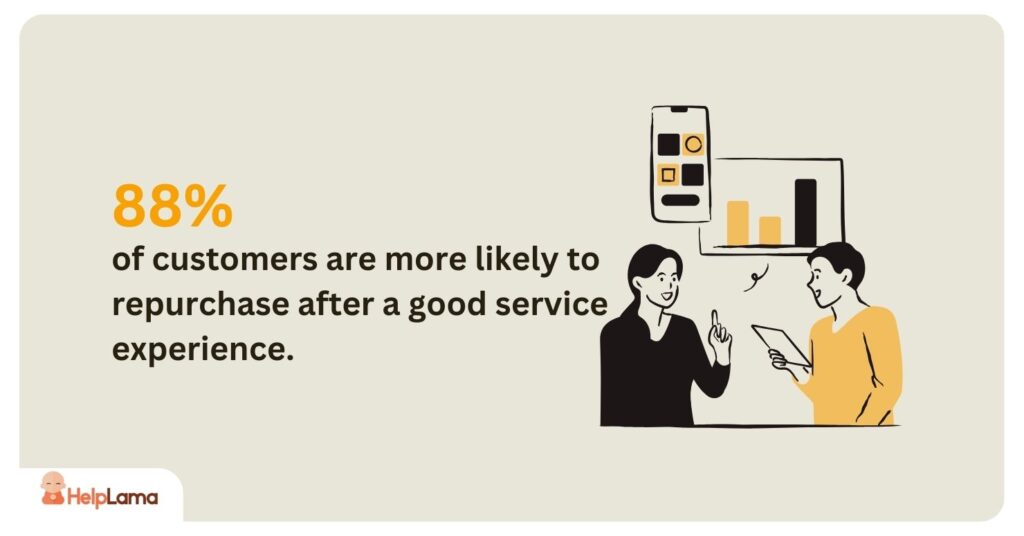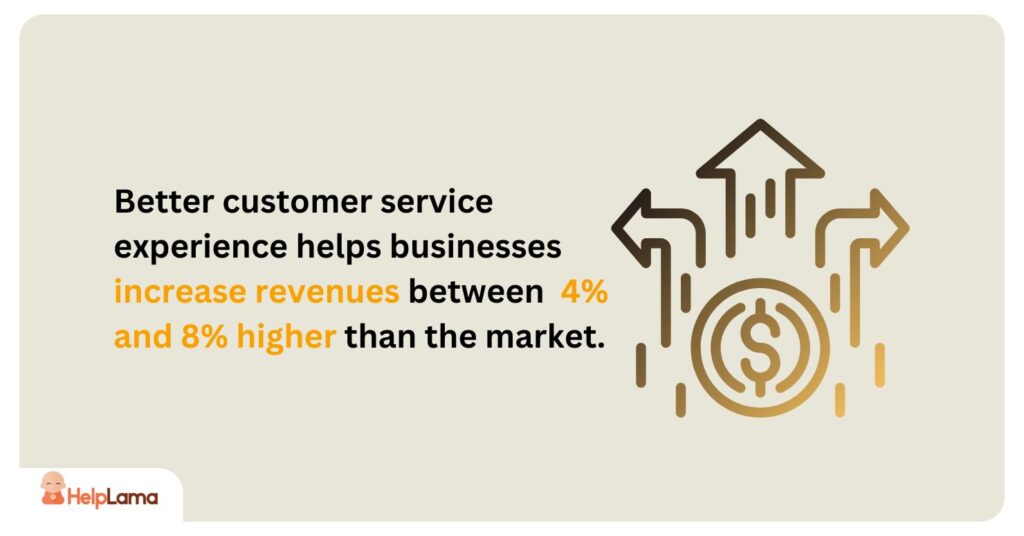Last Updated: April 2025
In 2025, delivering exceptional customer service means more than just answering questions—it requires the ability to defuse tension and resolve conflicts effectively. As customer expectations rise, so does the need for well-trained support teams equipped with powerful customer service de escalation techniques.
In fact, a recent Zendesk report reveals that 73% of customers are likely to switch to a competitor after just one negative service experience. This statistic underscores how critical it is to manage difficult conversations with care.
In this article, we’ll explore 10 essential customer service de escalation techniques every support professional should know to protect brand loyalty and ensure customer satisfaction in today’s fast-paced environment.
Table of Contents
What is the De-escalation Technique for Customer Service?
Importance of De-escalation in Customer Service
10 Customer Service De-escalation Techniques for Handling Difficult Customers
- Practice Active Listening
- Stay Calm and Professional
- Show Empathy
- Use Positive Language
- Focus on Solutions, Not Excuses
- Set Clear Boundaries When Needed
- Involve a Supervisor When Necessary
- Follow Up Promptly
- Use Mirroring Techniques (Subtly)
- Invest in De-escalation Training
Customer Service De-escalation Training
What is the De-escalation Technique for Customer Service?
De-escalation in customer service refers to strategies used to calm upset customers and resolve issues before they escalate. While commonly used in areas like law enforcement and healthcare, it’s especially vital in call centers where emotions can run high.
The target is to address issues at the first point of contact without the need to speak with a manager. This strategy is particularly useful when dealing with complaints, delays, or lengthy wait times.
This, in turn, translates into increased customer satisfaction and loyalty. In fact, 88% of customers are more likely to repurchase after a good service experience. They must be applied correctly if you want results.
Importance of De-escalation in Customer Service
De-escalation is an essential customer service skill, giving agents the ability to turn tense moments into trust-building opportunities. When emotions are running high, how your team reacts can make or break the relationship with the customer.
Here’s why de-escalation matters:
1. Preserves Customer Relationships
An angry customer is not always a lost customer. By simply hearing, understanding and valuing the user, proper de-escalation can transform them from being frustrated to a favourable advocate.
2. Protects Brand Reputation
Your brand reflects directly on your team’s interactions when difficult situations arise. Professional, empathetic responses diffuse emotional moments and prevent a potential negative review or public criticism.
3. Reduces Escalations and Complaints
When agents successfully manage conflict at the first point of contact, it cuts down on supervisor involvement or formal complaints. This saves time and resources.
4. Improves Agent Confidence and Morale
Trained in de-escalation techniques, customer service agents are more confident and less stressed when navigating high-pressure situations, which is an effective morale booster and burnout preventative.
5. Enhances Overall Customer Experience
A properly resolved complaint can become the highlight of the customer journey. People remember how you treated them, especially when something goes awry. So, making it right matters.
10 Customer Service De-escalation Techniques for Handling Difficult Customers
Mastering the art of de-escalating an irate customer is critical to providing outstanding customer service. In fact, 70% of customers report they’re more likely to remain loyal to a brand that resolves issues successfully.
With the techniques below, your team can manage high-tension scenarios more professionally, reaping a better experience for customers and agents alike.
1. Practice Active Listening
The first thing to do when faced with an angry customer is to listen. Allow them the space to share their concern without interruption. Active listening displays empathy and allows you to dissect the issue at hand, which, in effect, can soothe the customer.
When customers feel heard and valued, they generally feel more comfortable declaring their opinions about your business. This ensures a smoother interaction down the line as you have established a solid foundation of trust by proving your brand hears the customer’s voice.
2. Stay Calm and Professional
Your agents should remain calm no matter how frustrated or angry a customer may be. Calmness is infectious when support reps are steady and courteous, the customer usually adjusts their tone to match.
A hugely important part of any customer service program is training your agents to navigate emotionally charged situations in a professional manner without swearing or getting defensive.
3. Show Empathy
When a customer is angry, what they usually crave more than anything is to feel heard. Empathize with their plight and acknowledge their frustration. A genuine apology and a steady, empathetic voice can help a lot.
You can also use scripted empathy statements, such as:
- “I totally get your frustration.”
- “I’m really sorry that you’re going through this.”
- “Let me make this a priority and get it worked out for you.”
These statements can calm feelings and redirect the discussion to a more positive place.
4. Use Positive Language
Positive language can be a great de-escalation tool. Asking constructive questions and reframing statements work in all situations.
Avoid phrases like:
- “Please calm down.”
- “You’re wrong.”
- “That’s not our policy.”
- “I can’t help you.”
Instead, use:
- “Let’s all work together to find a resolution.”
- “I appreciate your patience.”
- “I’m here to help you.”
- “I will check on this for you.”
5. Focus on Solutions, Not Excuses
Your customers prefer solutions over excuses. Keep your agents focused on offering solutions, even referring or involving other departments if necessary.
Make sure your team has:
- You have access to a knowledge base
- The urgent sign-off on approvals from senior staff
- Resolution processing on the spot
- Application that allows customers to be updated in real time
Consider outsourcing customer service as many times as your infrastructure can not provide a seamless escalation/release process.
6. Set Clear Boundaries When Needed
It’s important to be compassionate, but agents must understand when to stop. If they turn abusive or don’t want to calm down, it’s OK to refuse to serve and set professional boundaries.
Let them know that you care , but there are boundaries, and they need to communicate with you respectfully to get assistance. Agents can remain calm and professional while helping set expectations by having a library of custom scripts to guide them through these situations.
7. Involve a Supervisor When Necessary
Sometimes, frontline agents cannot offer customers the solutions they need. When that happens, it’s important to have a process for quickly escalating the issue to a supervisor.
By allowing them to do so, it can diffuse some of the tension, which may ultimately help them in their role to resolve issues that arise with customers.
8. Follow Up Promptly
However, if an immediate resolution cannot be provided, ensure that a follow-up with clear timelines is given. Tell the customer precisely when they’ll get an update, and keep your word. This establishes trust and demonstrates that your team owns the issue.
9. Use Mirroring Techniques (Subtly)
Mirroring is a psychological approach in which you subtly echo the customer’s mood or physical stance to establish rapport. The aim is to demonstrate empathy and alignment, not to belittle.
But this technique, which involves repeating back to the customer what you have just heard them say, must be employed gently and respectfully. And, of course, do not exaggerate; it will sound insincere or sarcastic.
10. Invest in De-escalation Training
Finally, equip your team with dedicated de-escalation training. Include modules such as:
- Role-playing exercises
- Real-life customer scenarios
- Ongoing coaching and feedback
Preparing agents in this way builds confidence and ensures they have the tools necessary to navigate a difficult interaction.
Customer Service De-escalation Training
Providing your support team with the right de-escalation training is a sure way to address difficult customer interactions professionally and efficiently. When agents are trained to remain calm, listen with empathy, and deliver effective solutions under pressure, they are better at solving problems — but more importantly, they are brand ambassadors.
Better customer service experience helps businesses increase revenues between 4% and 8% higher than the market. And that’s an added incentive to make sure your support squad has the training to navigate tense talks with care and professionalism.
Here’s what effective de-escalation training should include:
1. Role-Playing and Real-Life Scenarios
Agents gain real-world experience through literal interactions with customers. The exercises teach them how to respond to irate or upset customers, how to use the appropriate words, and how to diffuse the tension before it escalates.
2. Emotional Intelligence Development
Training should focus on emotional intelligence to read a customer’s tone, recognize emotional cues, and respond with empathy. This helps to build trust, and it helps agents keep calm in high-stress situations.
3. Communication Techniques
This could involve training the agents in the use of calming language, mirroring techniques, and other active listening skills. Finding the right tone and choosing the proper words can flip a bad experience into a good one.
4. Customer De-escalation Scripts
Scripts are mighty weapons to arm agents with a template to broach difficult discussions confidently. Good de-escalation scripts provide empathetic phrases, solutions broken into steps and soothing rather than inciting language. Examples include:
- “I understand how frustrating this must be for you.”
- “Let me take care of this right away.”
- “We’re here to help, and I’ll do everything I can to resolve this.”
These scripts are more like strong guidelines that help keep agents calm while allowing them to personalize responses.
5. Understanding Company Policies and Solutions
Agents need to understand the boundaries of their abilities. Make solutions, escalation paths, and company policies available at the fingertips to ensure your conversations are smoother and the resolution happens faster.
6. Ongoing Coaching and Feedback
De-escalation training is not a one-off event. Periodical feedback, coaching, refresher courses, etc., help agents to sharpen their (customer conflict) skills.
With your customer service team training and being well-versed in de-escalation strategies, they’re able to transform issues into opportunities for connection, and that’s what great service is all about.
Helplama: The Best SaaS Customer Support Outsourcing Agency
In 2025, effective de-escalation is not merely optional; it’s a cornerstone of great customer service. Leading agencies like Helplama help this effort by providing outsourced support teams that are trained specifically for handling high-stress customer interactions with empathy, patience and professionalism.
Helplama’s method aims further than just FAQs; they understand customer feelings, resolve questions at speed and keep the tone as calm and steady across live chat, email, phone and social media as possible. Their agents are trained in soft skills, including active listening and de-escalation techniques that help shape negative experiences into positive ones.
With flexible pricing and US-based support options, Helplama is a reliable partner for businesses looking to reduce escalations, improve customer satisfaction, and create long-term loyalty, regardless of industry.
Conclusion
In 2025, mastering customer service de-escalation techniques is not just a skill—it’s a necessity. Research shows that it takes 12 positive customer experiences to make up for just one negative one, highlighting the importance of resolving tense interactions the right way.
By incorporating proven de-escalation methods—like active listening, empathy, and proactive communication—your team can turn frustrated customers into loyal advocates. These techniques help protect your brand reputation and enhance long-term customer relationships.
If you’re looking to strengthen your support capabilities, Helplama is a reliable partner. Their expert agents are trained in real-world customer service de-escalation techniques, providing calm, consistent, and scalable support that keeps your customers satisfied and your business growing.







